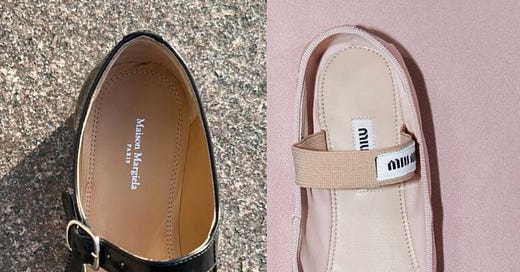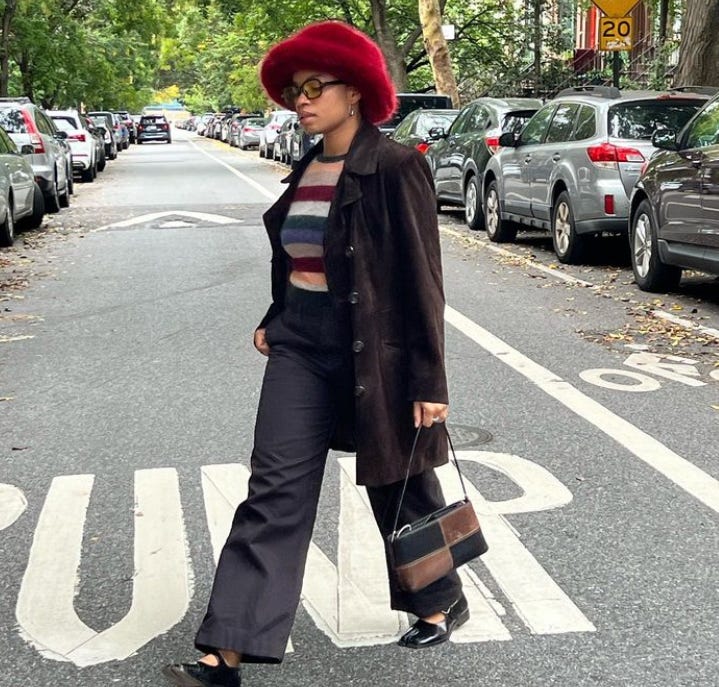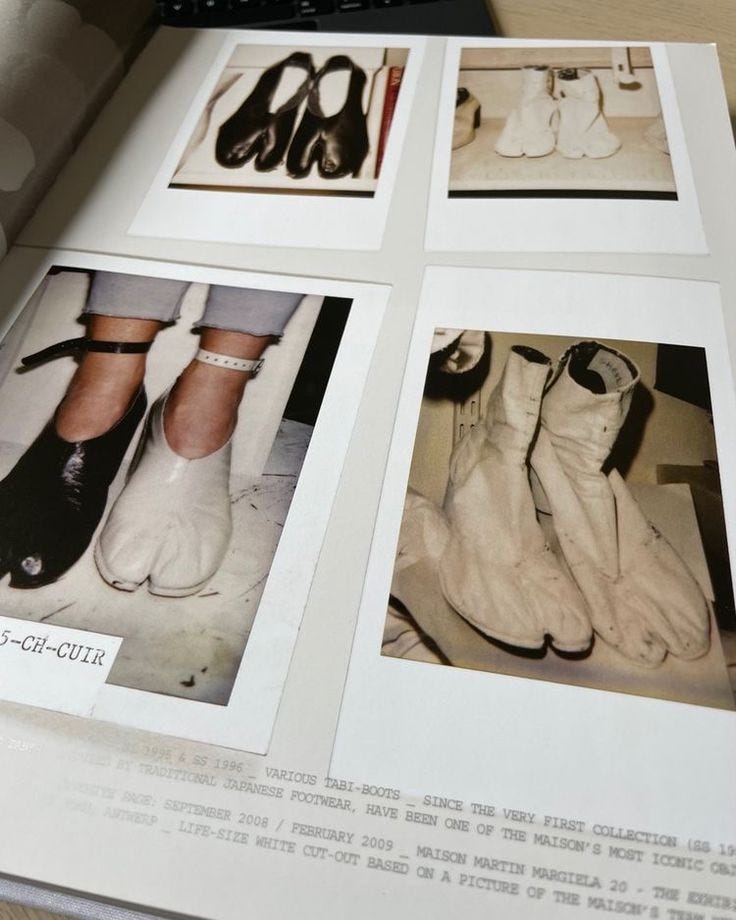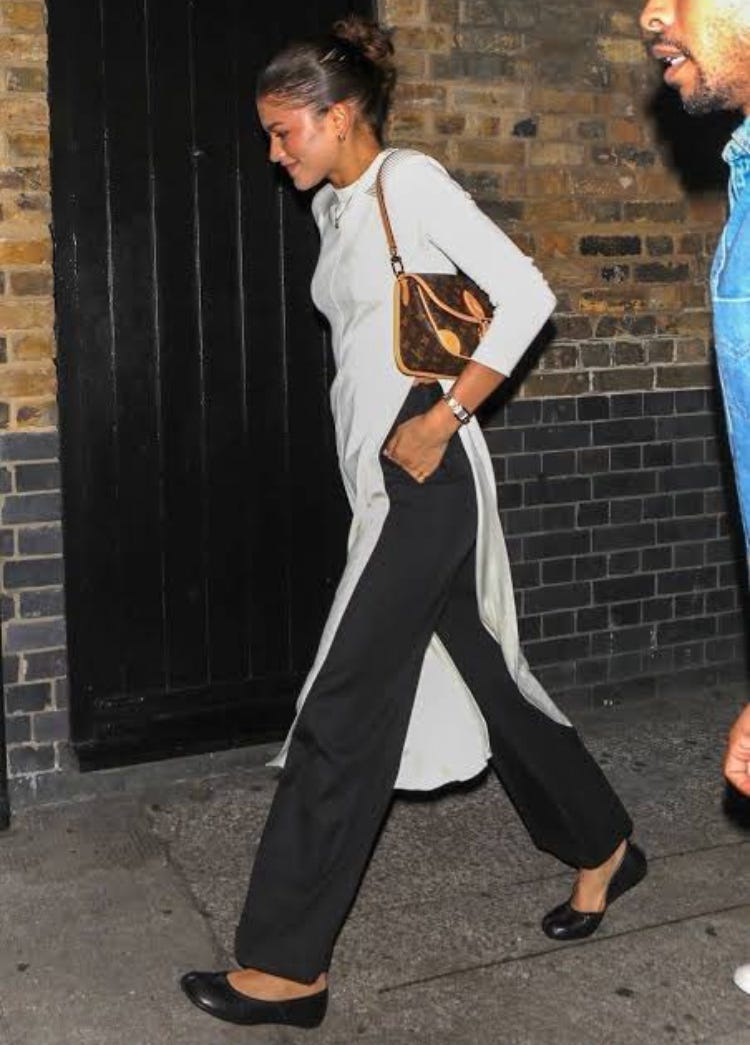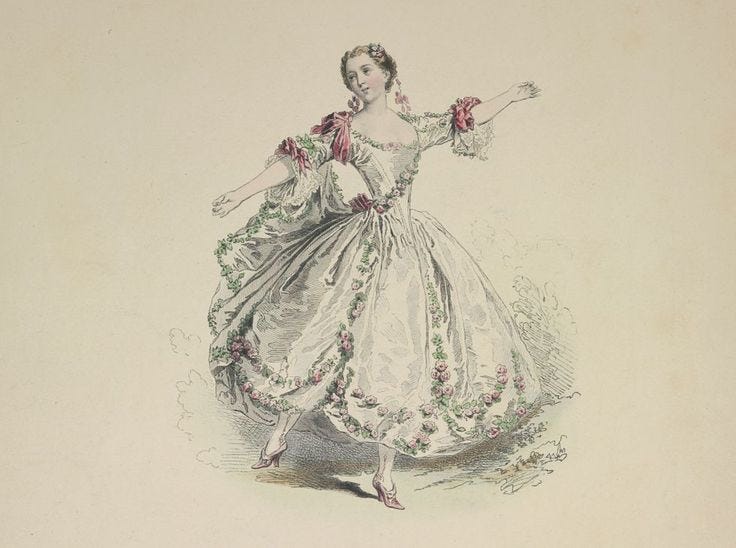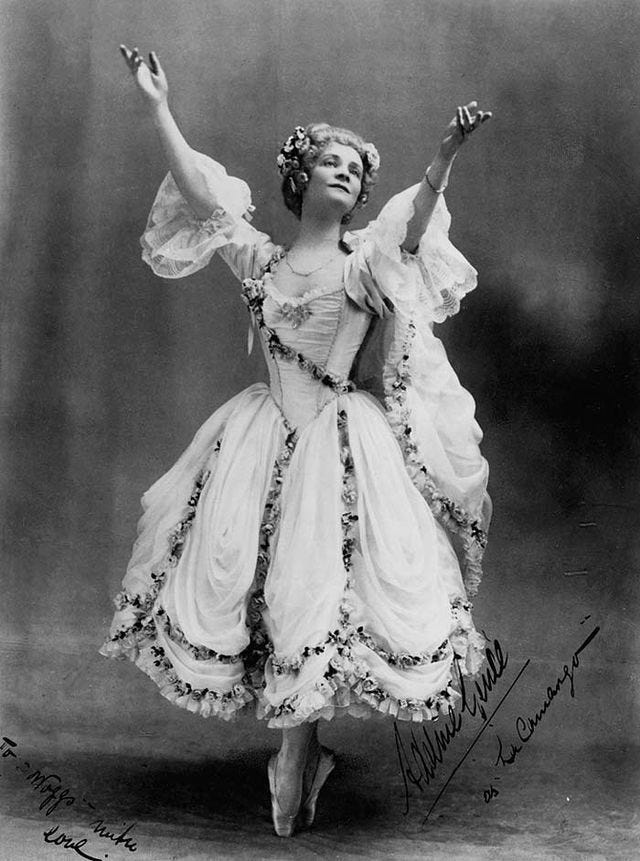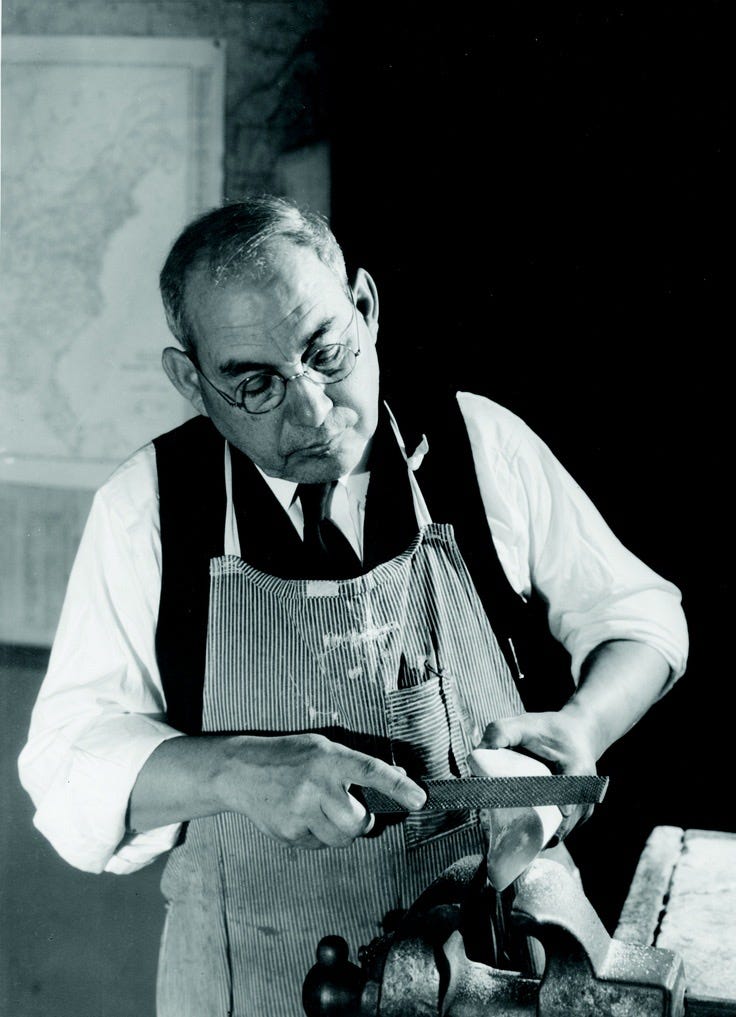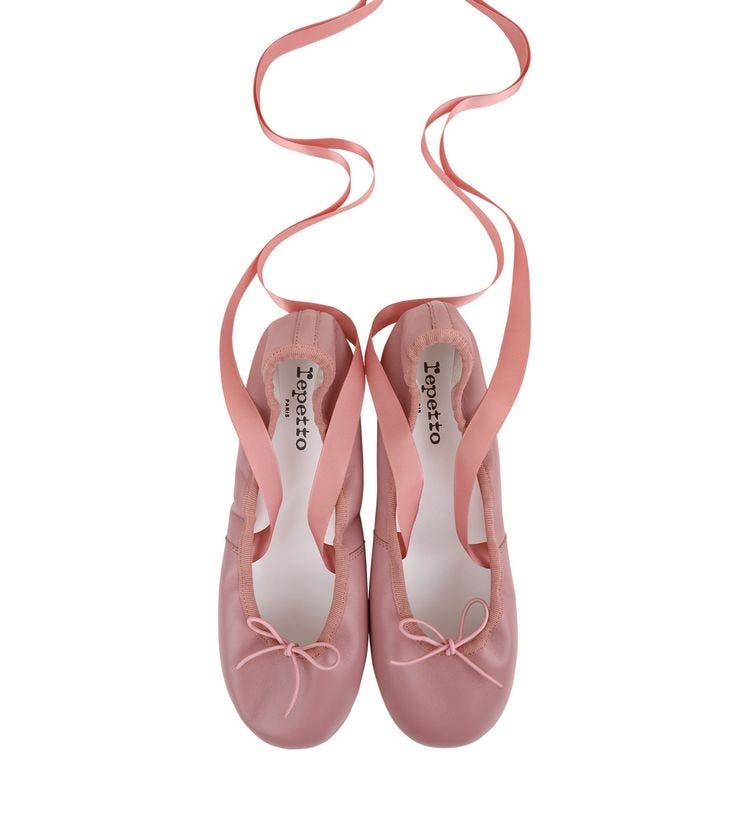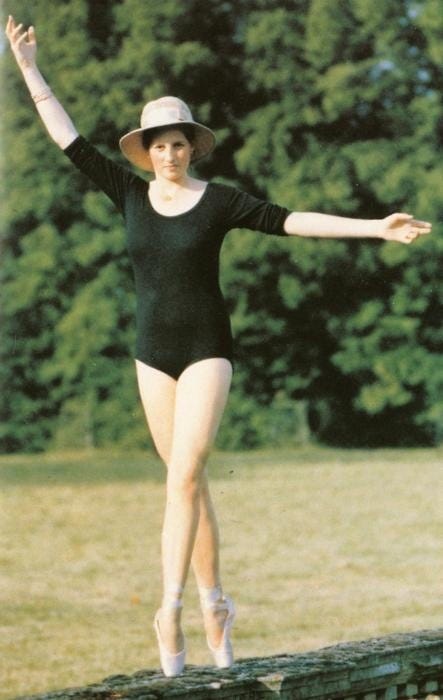Are you a Margiela Tabi Mary Janes Fashionista Or a Miu Miu Ballet Flats One?
The doubt of the year.
While many people try to define themselves with zodiacs, MBTI, and other psychological tests, fashion enthusiasts worldwide ask one mere question to their inner self, which can change everything. Am I a Margiela Tabi Mary Janes fashionista or a Miu Miu ballet flats one? The question seems uncomplicated, but the answer reveals the deepest questions of the universe and, perhaps, of ourselves.
You are probably already aware of the infamous Tabi Swiper. At the beginning of September, knitwear designer Alexis Dougé shared on TikTok her dating experience where her companion stole her Margiela Tabi Mary Janes. "This man is out here on Tinder and Hinge, and he will steal from you," the creator stated at the beginning of the video, which has been viewed more than 855,000 times. With the visibility she achieved online, Dougé could track down the thief and get her Tabis back.
Sharing in a Vogue interview that if she didn’t recover the pair of shoes she would have saved up for a new one because she’s a bad bitch and needs her Tabis, Dougé illustrated exactly Tabis fashionistas’ personality. They are unique,savage,courageous, intense and won't ever give up what is theirs – and sometimes what is not theirs but can be.
Although TikTok thieves and influencers may have increased awareness of Tabi shoes, it was Martin Margiela's 1988 collection, inspired by Japanese Tabi socks, that first established the shoe's status in the fashion world.
After leaving his position as an assistant at Jean Paul Gaultier to launch his label, Margiela came upon these shoes while visiting Japan. The designer intended to discover a completely different footwear, which he succeeded. Sending white laboratory coat-wearing models down the Café de la Gare runway with boots covered in paint, Margiela’s piece left unusuals yet appealing red hoofprints on the 1988 runway.
However, the history of shoes dates back to pre-15th century Japan. With its unique split-toe shape, the aristocracy used to wear them as socks, developed with the principles of reflexology. It was believed that its form cultivated harmony and transparency in the lives of those who wore them. Also known as Jika-tabi, it remains the go-to shoe for employees in the country today though with some differences. For instance, since the 1900s, soles have been added.
Following Margiela's rise to fame and the notorious robbery situation, Tabis became an iconic fashion item and a prerequisite for an expert-style reputation. As Dougé stated in Vogue, the girls that get it get the footwear's impact, influence, and singularity, and nothing impresses them more than the Tabis' uniqueness and distinctness. Stars from Olivia Rodrigo to Zendaya noticed its speciality, choosing the shoe that exuded their singular and fearless personality.
Miu Miu ballerina flats, on the other hand, convey a sort of daintiness; a delicacy that softens even the stronger detail. Perhaps its silk material is responsible for that, or maybe the entire concept of ballet. Despite doubts, the softness is there. Unsurprisingly, ballerina slippers originated in the ballet environment where high heels were the norm for almost seventy years.
Only in the 1700s did French dancer Marie Camargo break the tradition and perform in flats, becoming the first dancer to do so. As this footwear permitted more intricate movements, other ballerinas followed suit.
The ballet slipper achieved new status when Salvatore Capezio launched a store near the Metropolitan Opera House. After many years fixing ballet shoes, the souter opted to adjust their structures in such a way that they needed minimal repairs. The shoes were a success, establishing Capezio not only as a ballet icon but also as a fashion one. From that moment on, ballet flats leaped fast from dance to fashion in ways that, in the 1900s, designer Claire McCardell was so captivated by his creation that she hired Capezio to develop an off-the-stage model.
After the shoes appeared in McCardell’s collection, the piece gained enormous popularity, evolving into a footwear staple. Italian designer Rose Repetto, whose son was a well-known dancer, had his ballet flats hand-made to wear during his performances. Brigette Bardot then requested that Repetto produce a custom version of the shoe for her to wear in the film ''And God Created Woman''.
Throughout the movie, ballerina flats won even more notoriety. From many other remarkable figures of cinema and popular culture such as actress Audrey Hepburn, in ''Funny Face'', and Princess Diana, ballet slippers became a symbol of elegance and atemporality.
It was only in 2016 that Miu Miu debuted its version of the esteemed shoes,which became a massive hit, either in the fashion industry or social media. Photos of the brand’s ballet flats began to crowd social media platforms. Soon, celebrities from Bella Hadid to Elle Fanning adhered to it.
It’s undeniable that both footwear pieces had their popularity momentum, and still nowadays, remain on the fashion spot. According to this season's Lyst Index, Tabis are the world's hottest product this quarter. Tabi searches spiked at 342% after the Tabi Swiper story went viral on TikTok. Here the confusion enters, according to Lyst's 'year in fashion' report, Miu Miu is the brand of the year for the second time in a row.
The duel seems to have a tie. However, no matter the competition might have ended, fashionistas decide on the real end. So, what are you, a Margiela Tabi Mary Janes fashionista or a Miu Miu ballet flats one? Take the quiz on Quizur to find out.


